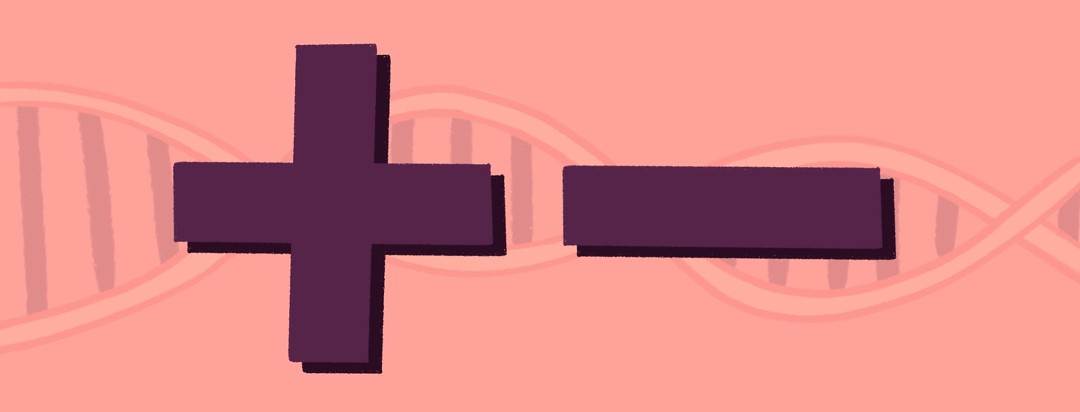Understanding HER2-Positive and HER2-Negative Breast Cancer
A diagnosis of breast cancer can be hard to take in. On top of the emotional burden it brings, this disease is complex with various types and subtypes. Learning about the breast cancer you have can help you take the next steps forward.
What are HER2-positive and HER2-negative breast cancers?
HER2 is a subtype of breast cancer linked to the human epidermal growth factor receptor 2 gene. This gene creates HER2 proteins that serve as receptors on the outer part of breast cells. These receptors receive signals that direct the growth of the cells.1,2
In some people, the HER2 gene duplicates too much. This leads to an increase in the amount of HER2 proteins produced. Too many HER2 proteins can result in an overgrowth of breast cells.1,2
Breast cancers that form with large amounts of HER2 proteins present are known as HER2-positive (HER2+). Breast cancers without excess HER2 proteins are called HER2-negative (HER2-) breast cancers.1,2
HER2+ breast cancers are less common but more severe. Only 20 percent of breast cancers are HER2+. HER2+ breast cancers grow and spread more rapidly. They also reoccur more often than HER2- breast cancers.1-3
A 2018 study showed a higher risk of metastasis (spread to other parts of the body) with certain breast cancer subtypes. People with the hormone receptor (HR)+/HER2+ and HR-/HER2+ subtypes had greater rates of brain, liver, and lung metastases. The HR+/HER2+ (versus HR+/HER2-) subtype had a higher risk of bone metastasis.4
How do you know if you have either of these subtypes of breast cancer?
Breast cancers are often found through mammograms, ultrasounds, and biopsies of breast tissue. A bit of breast tissue taken from the body during a biopsy goes through further testing. ImmunoHistoChemistry (IHC) and Flourescence In Situ Hybridization (FISH) tests can detect HER2+ and HER2- breast cancers.1,2
IHC and FISH tests detect the amount of HER2 proteins in the breast tissue. If a certain level of HER2 proteins are present, the breast cancer is HER2+. If not, the breast cancer is HER2-.1,2
Doctors usually order the IHC test first since it costs less money and yields results sooner. If the IHC test results are not clear, then a FISH test is completed. The FISH test provides a more precise count of HER2 proteins.1,2
The IHC and FISH tests may need to be repeated since HER2 levels can change over time. People with HER2- breast cancer can develop HER2+ breast cancer and vice versa.1,2
As with any cancer, early detection of breast cancer plays a crucial role in outcomes. The sooner you know you have HER2+ or HER2- breast cancer, the sooner you can start treatment. Finding out which of these cancers you have helps ensure the right treatment.
How are these subtypes treated?
HER2+ and HER2- breast cancers can be treated. The treatments for HER2+ breast cancer differ from the treatments for HER2- breast cancer.
HER2+ breast cancers are treated with HER2-targeted therapies. Monoclonal antibody drugs bind to HER2 proteins and halt the growth of cancer cells. Antibody-drug conjugates join to HER2 proteins and help transport chemotherapy to the cancer cells. Kinase inhibitors block the HER2 proteins from getting growth signals.1,3
Chemotherapy is often used to treat breast cancers that are HER2- and do not have estrogen and progesterone hormone receptors. These are known as triple-negative breast cancers. A limited number of other treatments may also be used to treat triple-negative breast cancers. These include immunotherapy, PARP inhibitors (that block certain proteins involved in cell growth and repair), radiation, and surgery.5
Hormone therapy can be used to treat a group of HER2- breast cancers known as triple-negative breast cancers. These cancers are HER2-, estrogen receptor-negative (ER-), and progesterone receptor-positive (PR+). Some targeted therapies can also be used to treat triple-negative breast cancers.2
Some metastatic breast cancers that are HER2- and hormone-receptor-positive can be treated with a targeted therapy called CDK4/6 inhibitors. These drugs hinder certain proteins (i.e., cyclin-dependent kinases 4 and 6) involved in cell growth.6
The outlook
There is hope for people with HER2+ and HER2- breast cancers. Tests can help tell which cancer you have, so you can begin the most effective treatment. Thanks to research, the number of treatments on hand for these breast cancers continues to increase.

Join the conversation